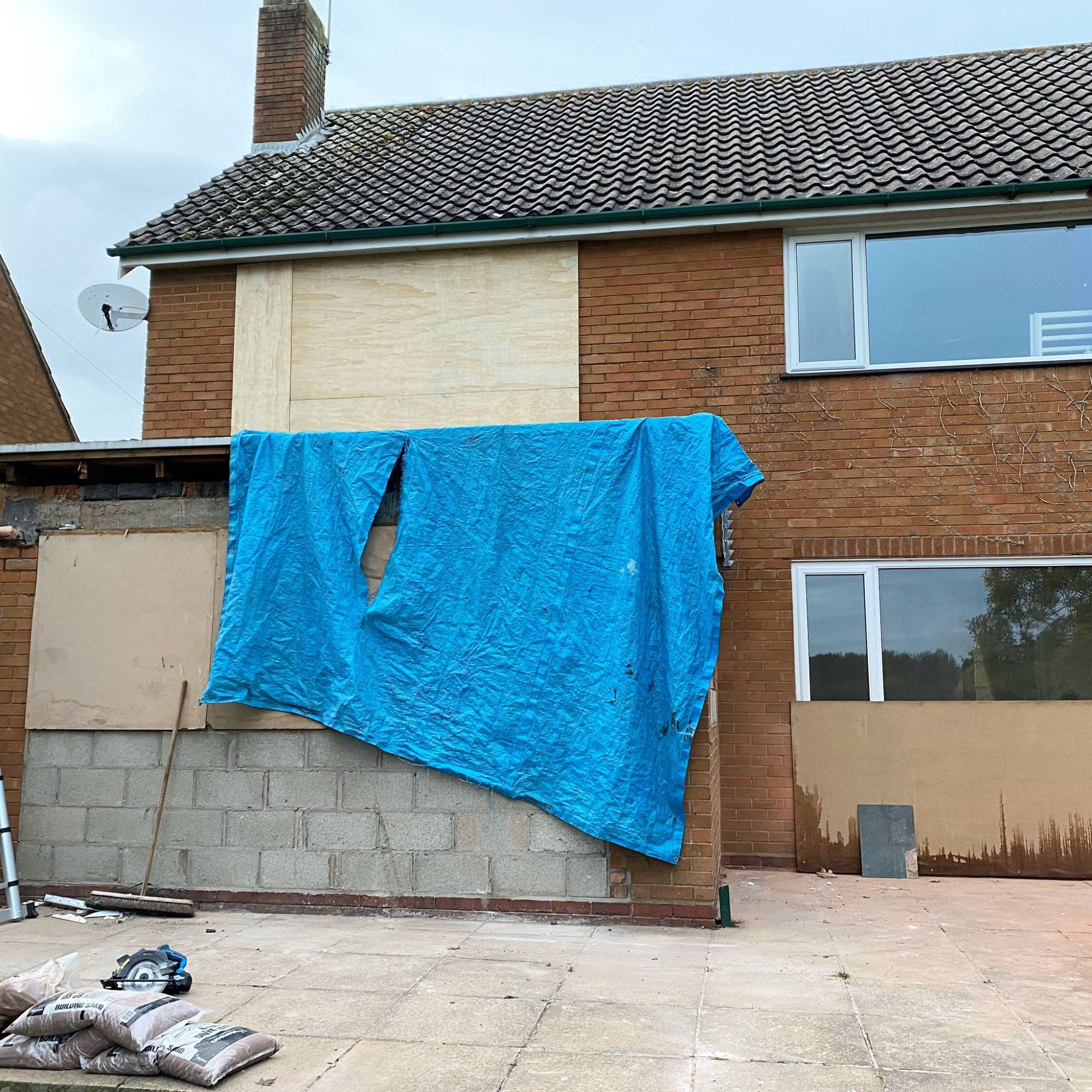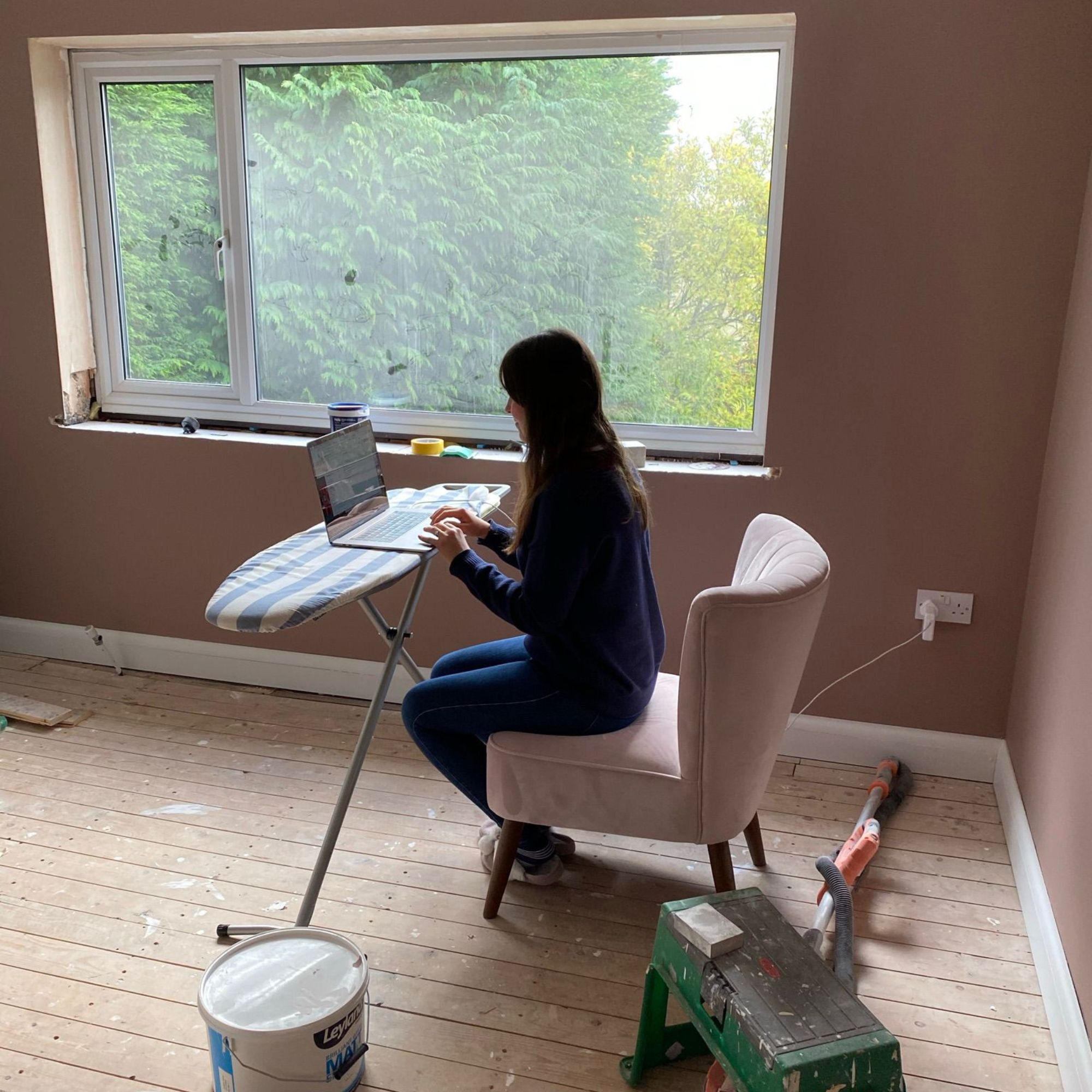
When it comes to any kind of major home improvement project, there is always a level of disruption to be expected. Whether you're building an extension or trying to renovate on a budget, which can run on for weeks or even months, it's not always practical (or affordable) to move elsewhere while the work is going on. That means you and your family can find themselves effectively living on a building site.
While this can be manageable with the right preparation, organisation and mindset, sometimes nothing can quite prepare you for the experience, especially when you are enduring it well after the novelty has worn off.
If you have a major home project for 2025, maybe incorporating some of the latest renovation trends into your home, then understanding the realities of living on-site can be key to making it through. We've spoken to a first time and a serial renovator, who have both been there and done it, and asked them what tips they would offer to those who might be doing the same.
1. Choose the timing of your project carefully
Laura Crombie, serial renovator and content director for Ideal Home's sister brand Homebuilding & Renovating, has been living in her house with her husband and their two children while renovating. Her first bit of advice for anyone planning a project like this to plan the time of year you undertake your building work thoughtfully. 'I'll never forget the couple of weeks we had no windows and boards over all the openings during a bitterly cold November - it was pitch black, draughty and miserable.'
2. Carve out space to live in
If you are going to live on-site, it's crucial for your health, safety and sanity to have designated spaces for you to live in (these may change as your project progresses).
First time renovator Nick Benson, who lived on-site with his wife for 12 weeks while renovating their 1960s bungalow, says: 'The idea of living on site didn't seem too terrible to us to start with - we'd planned to leave the living room and one en-suite bedroom until last so that we would have a couple of rooms to live in while the rest of the bungalow was renovated. And our initial timescale of 10 weeks didn't seem too daunting.
Laura adds: 'We were fortunate that we managed to keep our old kitchen and one bathroom until the new ones were installed elsewhere – I think that would have been a step too far!'
Even if you carve out your living spaces, it's likely you'll be without some staples and home comforts, so you may have to get creative. Laura told us she used an ironing board for a desk on days she was working from home.

3. Keep safety front of mind
If you are going to live on-site, especially with children, then it's important to keep safety front of mind at all times, although as Laura explains, it can be challenging. 'It was hard work keeping kids safe during the project. We tried to keep one room in tact at a time and fitted plastic zip doors to keep the dust out - it looked like a crime scene but kept the children in and the mess out. We also bought slip-on Croc-style shoes that are a must for little kids to wear when there are potentially nails and other rubble around.'
There might also be times where you have no power or heating, so its wise to stock up on lamps, torches, extra blankets and electric heaters.
This model takes the top spot in our guide to the best oil-filled radiators, and could keep you warm in the room your in, if you've got no heating elsewhere. It's got three temperature settings and a timer so you can customise the heat output to your needs.
This heated mattress protector can be dual controlled so you can personalise it to your side of the bed, and there's a range of temperature settings to choose from. No wonder it was our Sleep Editor's top pick of the best electric blankets you can buy.
This rechargeable work light might not be pretty, but it sure is practical if you find yourself needing effective lighting while living in your reno project - it'll offer better illumination than a table lamp, which is especially useful if you are having to step around rubble.
4. Plan ahead when it comes to meals
Relying on ready meals, or convenient snacks you can make with just hot water might be manageable for really short term project, but for any work running longer than that, it can become a really downer. However, prepping in advance if you can, could keep your spirits up.
Nick explains: 'We'd set up a microwave, and kettle in the living room, and were able to access a fridge freezer in the kitchen area for the duration of the work. We'd batch cooked and frozen lots of meals before the work started so we didn't feel like we were living on noodles and soup for months on end, which I think made a big difference to how we felt in ourselves.
'We also had family nearby, who kindly let us batch cook more meals at their house when we were running low.'
5. You cannot underestimate the amount of dust

'Even though people told me to expect a lot of dust, it's hard to imaging just how dusty it can get until you're in it. No matter how well you seal rooms off from where the work is going on, and no matter how tidy the builders are, the dust just gets absolutely everywhere. And it does feel like a thankless task trying to clear it up, as trying to clear it up, just throws it all up and it lands again just when you think you've finished, says Nick.
If you do try and keep on top of the dust yourself, you're probably going to need something more substantial than a cordless vac.
The huge 9L capacity of this extra large Henry vacuum cleaner is ideal for keeping on top of renovation dust, and it's corded which means it's one power level is enough to get the job done. It's also a bagged design, so none of that dust is coming out again when you empty it.
6. Try to create order in the mess
Living out of a couple of rooms for long periods of time can mean stuff piles up everywhere, but that's where effective storage is key to keep a handle on it.
A label maker will be your best friend if you choose to use boxes, so you're not unloading things unnecessarily to find what you need. For clothing, you can buy an inexpensive rail, like this one from Amazon, that can be dismantled for easy storage when you no longer need it.
For your existing furniture and belongings you don't need on a regular basis, try to store it elsewhere. Nick says: 'I was so glad we had a decent sized garage that we could use for storage, as it meant we didn't have to try and squeeze it in with us.'
If you have large items you need to store, it might be worth looking in to self storage options. It's an extra cost to factor in, but it will mean that trades can work uninterrupted and hopefully complete the job quicker.
7. Let friends and family help
Even if you're coping well with living on site, making sure you have time away is key to keeping your sanity.
'We were really grateful for those days when our friends or family invited us round for coffee or dinner,' says Nick. 'Having that time out of the building site was so appreciated, and it was nice not to have to wash up in our living room/bedroom/kitchen after a meal!.'
But as Nick also suggests inviting friends and family round so they can see the progress. 'It was so lovely to see people's reactions to how the project was coming together. Sometimes when you're in the thick of it, and especially if things are taking longer than planned, it can be hard to remember just how much progress you've made, and that's a great boost, especially when you're on the final stretch.'
We hope this insight helps if you have a renovation project coming up in 2025.







